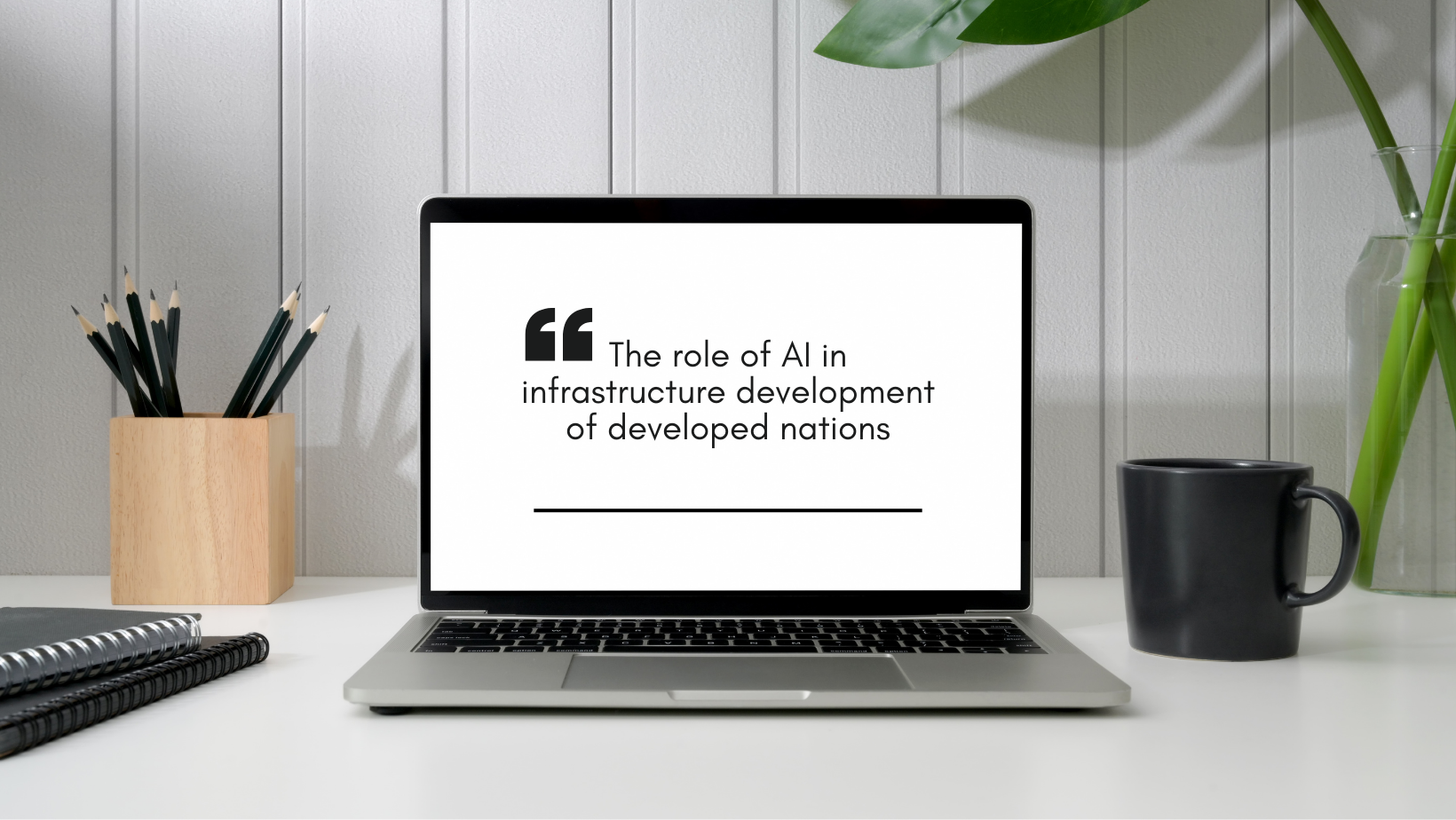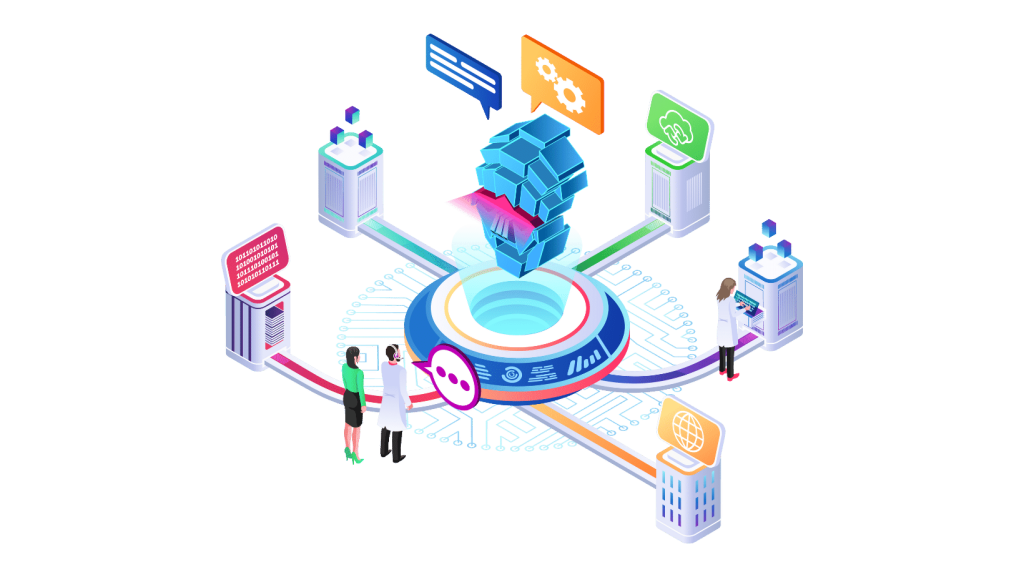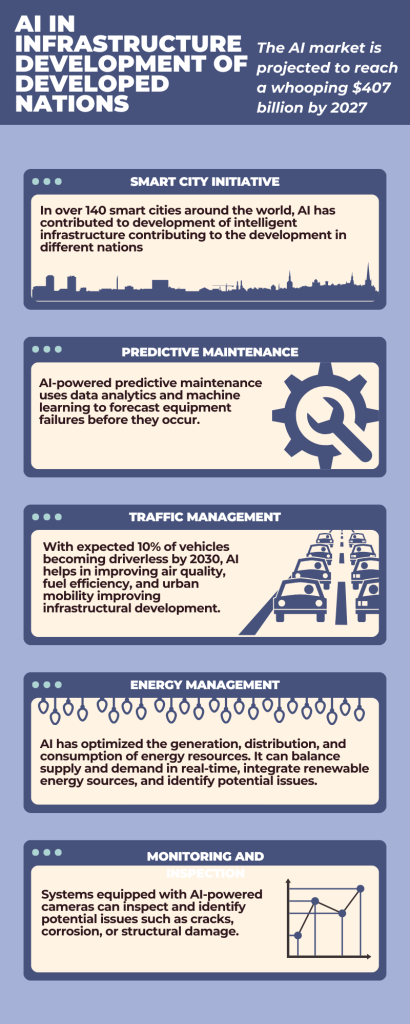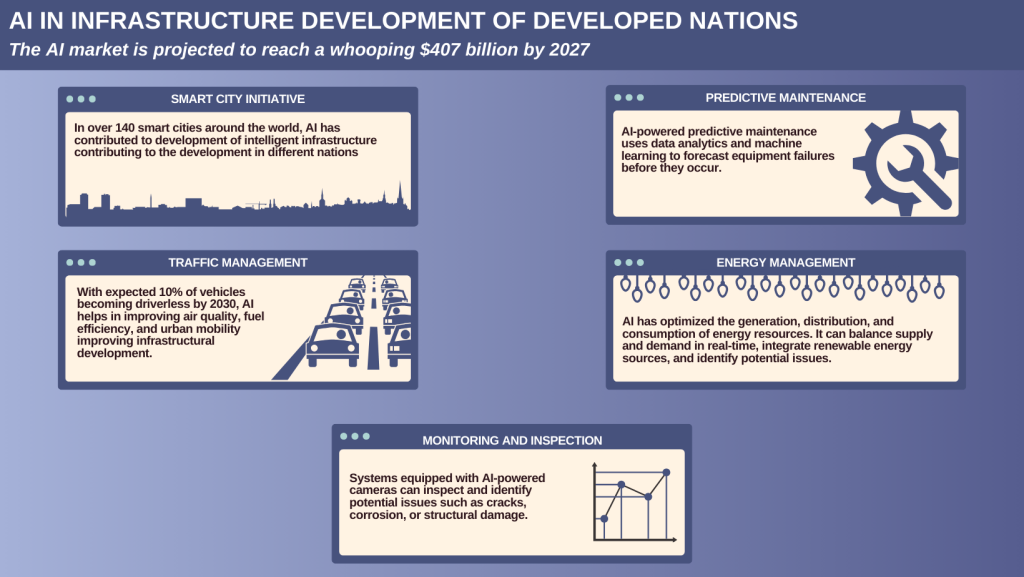
22 Jan The role of AI in infrastructure development of developed nations
In the ever-evolving landscape of infrastructure development, Artificial Intelligence (AI) 1stands as a transformative force, assisting in the current time of unprecedented efficiency, sustainability, and innovation. The AI market is projected to reach a whooping $407 billion by 2027 and as societies globally compete with the complexities of modern urbanization and the demand for resilient, interconnected systems, AI has emerged as a pivotal enabler, offering solutions that redefine how we plan, construct, and manage infrastructure.

Artificial intelligence, AI refers to developing computer systems that can do things that would typically require human intelligence like problem solving, learning, perceiving, or analyzing. AI is being rapidly adopted due to several factors like better computing power, facilitating the quick processing of vast datasets vital for AI algorithms.


Infrastructure development made easy by AI.
This exploration dives into the different ways by which AI is influencing the infrastructure sector, driving advancements that not only enhance functionality but also a sustainable and interconnected future for the developments we have made in the following ways-
- Smart city initiative
AI has been a driving force for the implementation of Smart City initiatives, where technology is leveraged to enhance the quality of life of common people. Through the integration of sensors, data analytics, and algorithms, cities can optimize resource utilization, improve public services, and enhance overall efficiency. AI-driven systems can analyze real-time data from various sources, such as traffic cameras, weather sensors, and social media, to dynamically manage traffic flow, reduce congestion, and enhance public safety. In over 140 smart cities around the world, AI has contributed to development of intelligent infrastructure, including waste management systems, and water distribution networks, fostering sustainable and resilient urban environments, improving the infrastructure development in developed nations.
- Predictive maintenance
In the arena of infrastructure development, predictive maintenance has become a game-changer with the help of AI. Traditional maintenance practices often rely on fixed schedules or reactive responses to equipment failures, leading to inefficiencies and downtime. AI-powered predictive maintenance uses data analytics and machine learning to forecast equipment failures before they occur. By continuously monitoring the condition of infrastructure components, such as bridges, roads, and utilities, AI systems can predict maintenance needs, optimize repair schedules, and ultimately extend the lifespan of critical assets. This proactive approach not only reduces costs but also enhances the reliability and safety of infrastructure networks, making infrastructure development more robust.
- Traffic management
Traffic congestion is becoming a pressing issue in developed nations, and AI has emerged as a powerful tool for optimizing traffic management systems and resolving those issues. AI algorithms process vast amounts of data from different sources, such as traffic cameras, GPS devices, and mobile apps, to analyze current traffic conditions and predict future patterns. This enables dynamic adjustments to traffic signal timings, rerouting strategies, and public transportation schedules. With expected 10% of vehicles becoming driverless by 2030, and the global market of self-driving cars increasing from 20.3 million in 2021 to 62.4 million, by promoting smoother traffic flow and reducing congestion, AI contributes to improved air quality, fuel efficiency, and overall urban mobility which in turn facilitates infrastructural development process in developed nations.
- Energy management
AI has impacted energy management in developed nations by optimizing the generation, distribution, and consumption of energy resources. Smart grids, which are enabled by AI tools like NARI technology, can balance supply and demand in real-time, integrate renewable energy sources efficiently, and identify potential issues before they escalate. Similarly, machine learning algorithms analyze historical data to predict energy consumption patterns, allowing for better planning and resource allocation. Additionally, AI-driven energy management systems contribute to sustainability goals by promoting energy conservation and reducing carbon footprints.
- Monitoring and inspection
Infrastructure assets require regular monitoring and inspection to ensure safety and compliance with regulations. AI facilitates this process by automating and enhancing monitoring activities. Systems equipped with AI-powered cameras can inspect bridges, tunnels, and other critical infrastructure, identifying potential issues such as cracks, corrosion, or structural damage. AI algorithms analyze the collected data, providing accurate and timely information for maintenance and repair decisions. This not only improves the efficiency of inspection processes but also enhances the overall safety and resilience of infrastructure systems.
From the realization of Smart City initiatives to the optimization of maintenance practices, traffic management, energy systems, and monitoring processes, AI continues to redefine the way nations approach and build their critical infrastructure. As technology continues to advance, the role of AI in infrastructure development is poised to grow, giving rise to opportunities for creating smarter, more resilient, and sustainable urban environments in the developed nations.
Blog by Shreya Ghimire,
Research Analyst, Frost & Sullivan Institute
